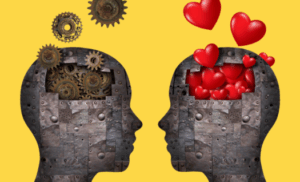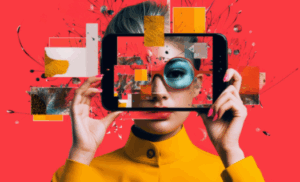2023 may be the year we see the end of social media as we know it. The idea is not my own, although I have been pondering for some time the phenomenon that has already been given a name: “recommendation media“. This approach suggests that traditional social networks are going to be overtaken or evolve – if they haven’t already – into platforms in which the key, instead of residing in the social network, will be in the content proposal that can engage each of us. Recommendations abound in that: they personalise what we watch and condition the extent to which our knowledge develops. Whether this is good, bad or worse is something we will see… as long as we are able to acknowledge it.
Social networks were conceived as environments for communication and dialogue between people or entities, where content could be shared in different formats and an opinion or reaction to that content could be expressed. A critical element was, and still is, connecting with other people. Following different individuals and forming communities became the basis for visibility and notoriety. After all, if my community of followers is small, how many people am I going to reach?
The social graph domain stage
This is where the importance of the social graph lies. It is a representation of relationships and connections between individuals or groups in a social network. It explains how people relate to each other and how they influence each other. This is indeed the basis of influential profiles and explains why it has been so important for them to have many followers: more reach, more impact and more possibility to monetise the whole thing.
“The social graph explains why it has been so important for influential profiles to have many followers”
In a social graph we can see points or nodes that represents people or groups present, as well as the connections between these nodes as a representation of the relationships that exist between them. All of this is usually a conceptual view and is not explicitly shown to us on Facebook, Twitter or TikTok, but it can be represented. Each node and each line can have additional attributes or characteristics, such as the intensity of the relationship, the type of relationship or the direction of the relationship (when only one communicates or both points connected in both directions).
The traditional social media scenario developed on the basis that those with large communities were able to reach more people with their content. The power was, in this case, in the hands of the influencer: the more followers, the more impact and the more power.
The shift to recommendation media
However, not so long ago, Instagram made it easier to hide the number of reactions so as not to provoke users to value more the posts that received more attention from other members of the community. So what was happening with that? Well, something closely related to another trend that has spread to all social networks: displaying the timeline not in chronological order, but according to what our contacts see, what generates the most interest on the platform or what has to do with topics that we stop at because we find them interesting.
Twitter has been pushing this for a long time. Facebook was a pioneer, mostly with the intention of monetising attention in the form of sponsored posts and curating content so abundant that it was impossible for any of us to keep up with what our friends were posting. TikTok and Instagram followed the same route, the later controversially, because the behaviour of its algorithm has led to us losing sight of profiles we followed with interest to the detriment of content of unknown but undoubtedly magnetic origin. In my case, I live on a rollercoaster of emotions depending on what Instagram decides can catch me: from magic tricks to sports gymnastics. All this despite the fact that my main interests on the platform are urban art and the world of aviation.
The role of algorithms in recommendations
The algorithm, that mathematical formula that is as secret as the key to Coca-Cola, now decides what we see by analysing our behaviour and suggesting content. It wants to trap us, prevent us from logging out and strives to personalise more and more the posts that slip in front of us. In this way, we have gone from seeing what the content creators we were interested in offered us to seeing what the platform considers important.
“We have gone from seeing what the content creators of interest to us were offering to seeing what the platform considers important”
Content creators, until now, have decided what, how and when. From now on, all that is irrelevant if the algorithm determines it. Social media has mutated into recommendation media, spaces dominated by the recommendations of artificial intelligence and machine learning. Without being aware of it, we have lost autonomy and put ourselves in the hands of systems that cradle and entertain us. Meanwhile, content creators, with influencers at the forefront, have to redouble their efforts to make themselves more necessary for all audiences, so that they do not lose visibility, diminished by the criteria of algorithms.
Algorithmic recommendation has already made its way into streaming systems, such as Spotify or Netflix, which have refined their technique to generate highly personalised experiences. In theory, with these environments, we put an end to the so-called bubble filters generated by those social connections that isolated us from other profiles and led us to see the world as set by our influencers of reference.
Can we expand our own boundaries?
To sustain this scenario, it is necessary to generate more and more content with which to differentiate what is offered to me from what is offered to others. If there were too little content, it would be impossible to personalise the offer for millions of users. In a way, we are enclosed again, but this time not in digital communities of opinion, but in ourselves, with no possibility of expanding our limits if we are not aware of them. We are left with the option, however, of cheating the mathematical formula so that obvious recommendations become surprising suggestions.












